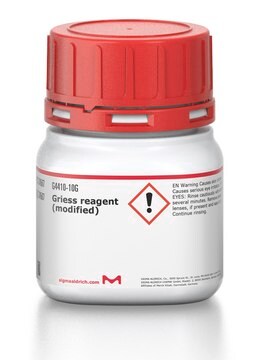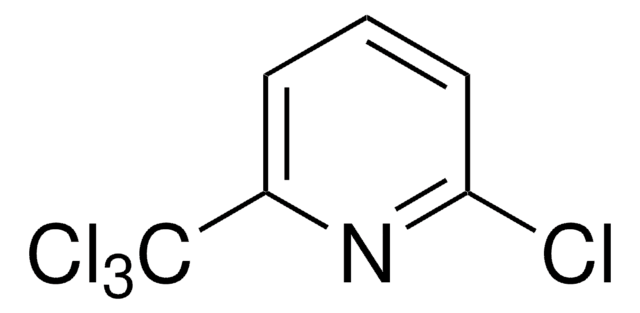N9125
N-(1-Naphthyl)ethylendiamin -dihydrochlorid
≥98%
Synonym(e):
2-(1-Naphthylamino)-ethylamin -dihydrochlorid
About This Item
Empfohlene Produkte
Assay
≥98%
Form
powder
mp (Schmelzpunkt)
194-198 °C (dec.) (lit.)
SMILES String
Cl.Cl.NCCNc1cccc2ccccc12
InChI
1S/C12H14N2.2ClH/c13-8-9-14-12-7-3-5-10-4-1-2-6-11(10)12;;/h1-7,14H,8-9,13H2;2*1H
InChIKey
MZNYWPRCVDMOJG-UHFFFAOYSA-N
Suchen Sie nach ähnlichen Produkten? Aufrufen Leitfaden zum Produktvergleich
Verwandte Kategorien
Anwendung
- N
- -(1-Naphthyl)ethylendiamin-substituierte Cylotriphosphazen-Derivate als potenzielle antimikrobielle Mittel.
- Fluoreszierende Chemosensor-Verbindung mit einer Naphthyl-Gruppe als Fluorophor und Cyclen als Metallionenchelatbildner für den Nachweis von Zn(II) in wässriger Lösung.
- (N-1-Naphthyl-ethylendiamin)-dichlorplatin(II)-Fluoreszenz-Komplex (λmax = 405 nm).
Signalwort
Warning
H-Sätze
Gefahreneinstufungen
Eye Irrit. 2 - Skin Irrit. 2
Lagerklassenschlüssel
11 - Combustible Solids
WGK
WGK 3
Flammpunkt (°F)
Not applicable
Flammpunkt (°C)
Not applicable
Persönliche Schutzausrüstung
dust mask type N95 (US), Eyeshields, Gloves
Hier finden Sie alle aktuellen Versionen:
Besitzen Sie dieses Produkt bereits?
In der Dokumentenbibliothek finden Sie die Dokumentation zu den Produkten, die Sie kürzlich erworben haben.
Kunden haben sich ebenfalls angesehen
Unser Team von Wissenschaftlern verfügt über Erfahrung in allen Forschungsbereichen einschließlich Life Science, Materialwissenschaften, chemischer Synthese, Chromatographie, Analytik und vielen mehr..
Setzen Sie sich mit dem technischen Dienst in Verbindung.












